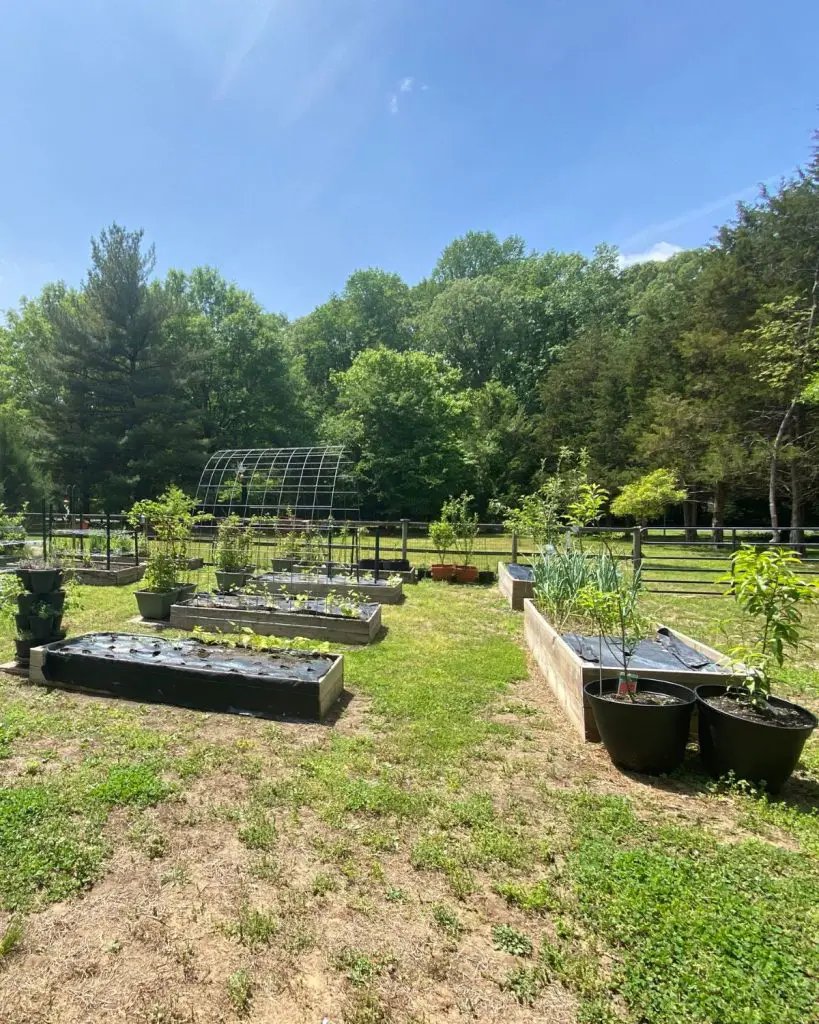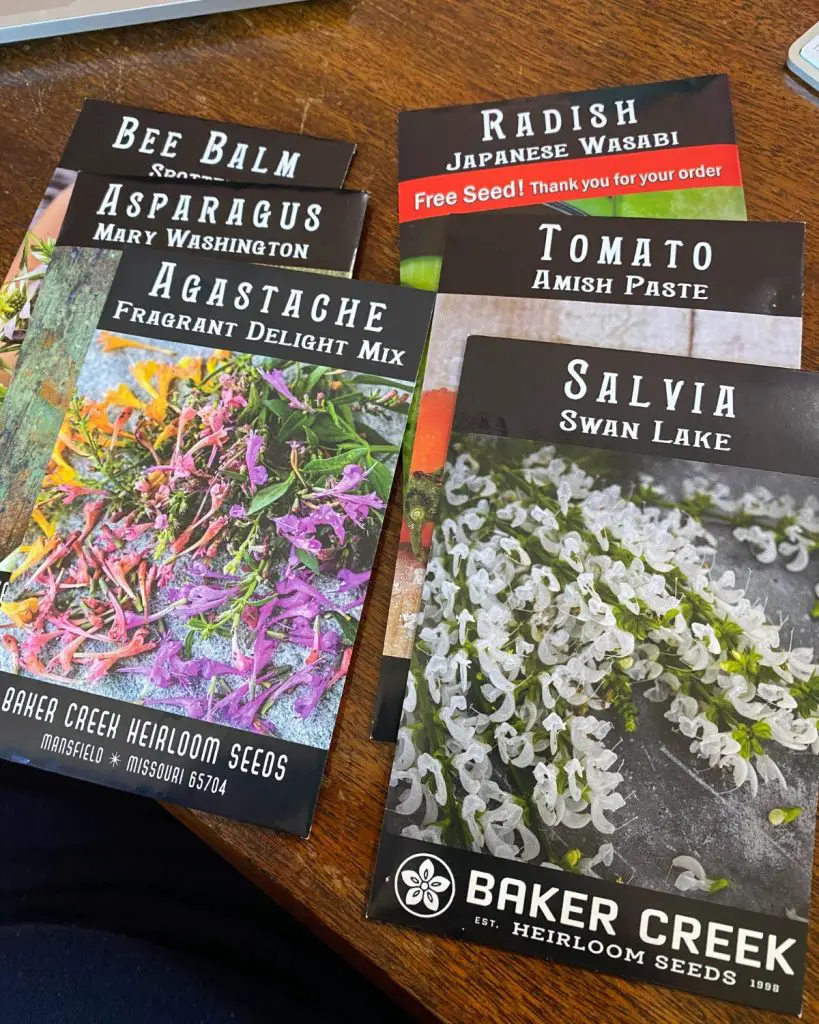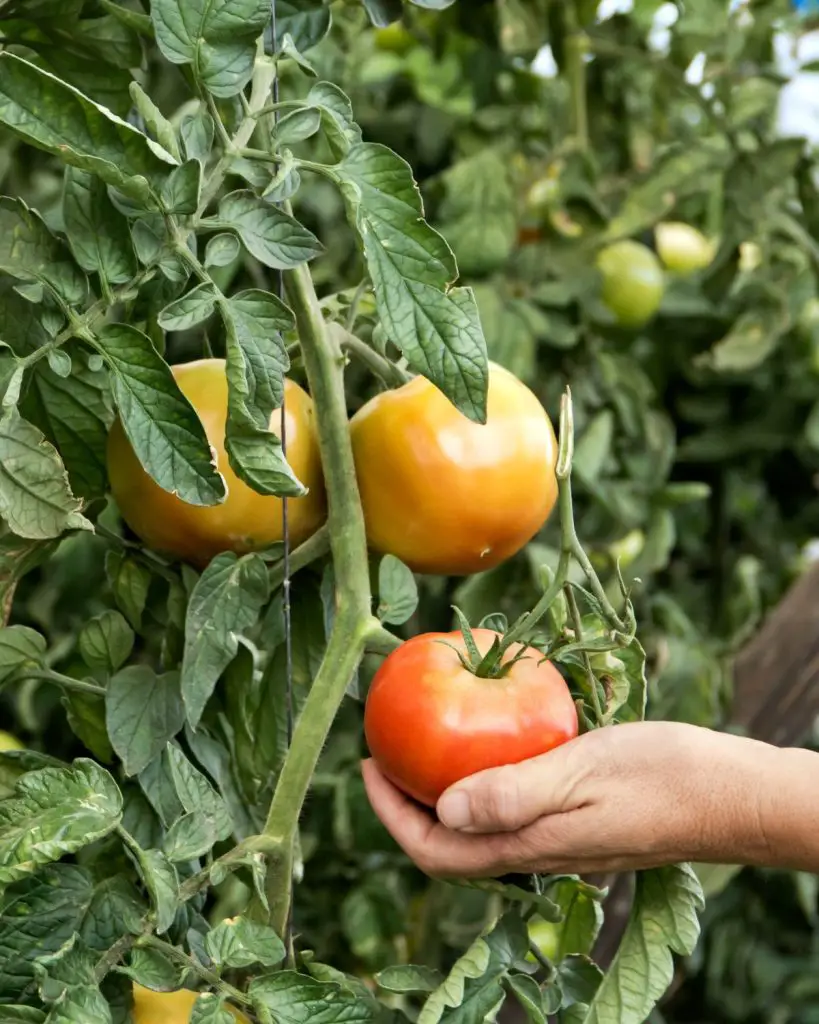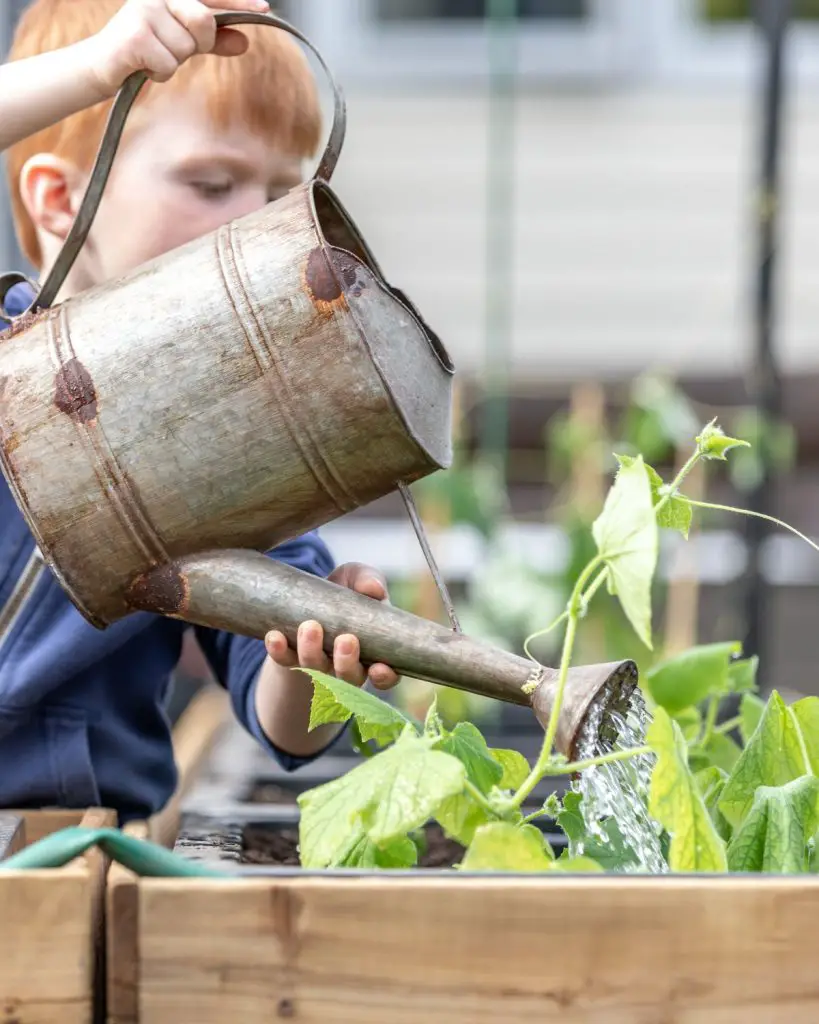Beginner’s Guide to Gardening: Tips and Tricks for Starting Your Own Garden
Gardening can be a relaxing and rewarding hobby, but it can seem overwhelming to beginners. For those who are new to gardening, it’s important to start small and not take on too much at once. This will help prevent frustration and ensure that the garden is manageable.
One of the most important things for a new gardener to keep in mind is to start with a few simple plants. It’s easy to get carried away and want to plant everything at once, but this can quickly become overwhelming. Instead, choose a few plants that are easy to care for and that will thrive in the garden’s conditions. This will help build confidence and provide a good foundation for future gardening endeavors.
Disclosure: As an Amazon affiliate, I earn from qualifying purchases at no extra cost to you. My blog contains other affiliate links as well for your convenience. To learn more, you may read my Disclosure Policy. Thank you for supporting my blog!
Benefits of Gardening
Gardening is an activity that provides numerous benefits, both physical and mental, for people of all ages. Whether you have a large backyard or a small balcony, gardening can be a rewarding and enjoyable experience. Here are some of the benefits of gardening:
Physical Benefits
Gardening is a great way to get some exercise and stay active. It involves a lot of physical activity such as digging, planting, weeding, and watering, which can help improve your overall fitness level. Additionally, spending time in the sun while gardening can help your body produce vitamin D, which is essential for strong bones and a healthy immune system.
Mental Benefits
Gardening is a great way to reduce stress and improve mental health. It provides a sense of accomplishment and can be a relaxing and meditative activity. Gardening also offers an opportunity to connect with nature, which has been shown to have a calming effect on the mind and body.

Environmental Benefits
Gardening can also have a positive impact on the environment. By planting flowers and vegetables, you can attract pollinators such as bees and butterflies, which are essential for the health of our ecosystem. Additionally, using compost, manure, and mulch can help improve soil quality and reduce the need for chemical fertilizers.
Financial Benefits
Finally, gardening can also be a cost-effective way to provide fresh produce for your family. By growing your own fruits and vegetables, you can save money on groceries and enjoy the satisfaction of eating food that you have grown yourself.
Overall, gardening is a great activity that provides numerous benefits for both the gardener and the environment. Whether you are a beginner or an experienced gardener, there are many reasons to start a garden today.
Choosing a Garden Location
One of the most important factors in having a successful garden is choosing the right location. Here are some things to consider when selecting a spot for your garden.
Sunlight
Most vegetables need at least 6 hours of direct sunlight per day to grow well. Look for a spot that gets full sun, which means it receives at least 6 hours of direct sunlight per day. If you don’t have a spot that gets full sun, look for a spot that gets partial sun, which means it receives 3-6 hours of direct sunlight per day.
Shade
While most vegetables need full sun, some can tolerate partial shade. Leafy greens like lettuce and spinach can do well in partial shade, as can root vegetables like carrots and beets. If you have a spot that gets partial shade, consider planting these types of vegetables there.
When choosing a spot for your garden, also consider the following:
- Soil: Look for a spot with well-draining soil that is rich in organic matter. Avoid areas with compacted soil or soil that stays wet for long periods of time.
- Water: Make sure the spot you choose is easily accessible to a water source. If you have to drag a hose across your yard to water your garden, you may be less likely to do it regularly.
- Proximity to your home: Choose a spot that is close to your home so you can easily check on your garden and harvest vegetables as they ripen.
- Wildlife: If you live in an area with deer, rabbits, or other wildlife that may eat your vegetables, consider fencing in your garden or choosing a spot that is less accessible to these animals.
By considering these factors when choosing a spot for your garden, you can help ensure that your vegetables grow healthy and strong, and that you have a bountiful harvest.

Preparing Your Garden
Before starting a garden, it’s important to prepare the soil. This will ensure that your plants have the nutrients they need to grow healthy and strong. In this section, we’ll cover the three main steps you should take when preparing your garden: soil testing, amendments, and drainage.
Soil Testing
Soil testing is an important first step in preparing your garden. It will help you determine the pH level of your soil and identify any nutrient deficiencies. You can purchase a soil test kit at your local garden center or online. You can learn more about soil testing here.
Once you have your soil test results, you’ll know what amendments to add to your soil. For example, if your soil is too acidic, you can add lime to raise the pH level. If your soil is lacking in nutrients, you can add compost or fertilizer.
Amendments
Amendments are materials that you add to your soil to improve its structure and fertility. Some common amendments include compost, manure, and peat moss. You can also use organic materials like leaves, grass clippings, and kitchen scraps to create your own compost.
When adding amendments to your soil, it’s important to mix them in thoroughly. Use a garden fork or tiller to break up any clumps of soil and distribute the amendments evenly.
Drainage
Good drainage is essential for a healthy garden. If your soil doesn’t drain well, your plants may become waterlogged and develop root rot. To improve drainage, you can add sand or perlite to your soil. You can also create raised beds or plant your vegetables in containers.
In addition to adding drainage materials, it’s important to make sure that your garden is properly graded. This means that the soil slopes away from your plants and toward a drainage area, such as a ditch or rain garden.
By taking these steps to prepare your garden, you’ll create a healthy environment for your plants to grow. With a little bit of care and attention, you’ll be on your way to a bountiful harvest.
Starting Your Garden
Starting a garden can be a fun and rewarding experience for beginners. However, it can also be overwhelming with so many things to consider. In this section, we will cover important aspects of starting your garden, including frost dates, seeds, and seedlings.
Frost Dates
Before starting a garden, it is important to know your area’s frost dates. Frost dates determine the average dates of the last spring frost and the first fall frost in your area. Knowing your frost dates will help you plan your planting schedule and ensure that your plants have enough time to grow and mature before the first fall frost.
To find out your area’s frost dates, you can check with your local gardening center or use online resources such as the Farmer’s Almanac. Once you know your frost dates, you can plan your planting schedule accordingly.
Seeds and Seedlings
When starting a garden, beginners have the option of using seeds or seedlings. Seeds are a more affordable option, but they require more time and effort to grow. Seedlings, on the other hand, are more expensive but provide a head start to your garden.
If you decide to use seeds, it is important to choose high-quality seeds from a reputable source. Make sure to read the seed packet instructions carefully and follow them closely. Some seeds require pre-soaking or special treatment before planting.
If you decide to use seedlings, make sure to choose healthy plants from a reputable nursery. Avoid plants with yellow leaves or signs of disease. When planting seedlings, make sure to dig a hole that is deep enough to accommodate the plant’s roots.
In conclusion, starting a garden can be a fun and rewarding experience for beginners. By understanding your area’s frost dates and choosing high-quality seeds or seedlings, you can ensure a successful and bountiful garden.

Get our
Garden Planner & Journal
Everything you need to start and maintain a successful garden. Take the guess work out of what to plant where and when to start your seeds.
Garden Design
Garden design is an essential aspect of creating a beautiful and functional garden. For beginners, it can be overwhelming to know where to start, but there are a few design principles that can help guide the process.
Scale
One of the most common mistakes beginners make is underestimating the mature size of plants and garden beds. It’s important to consider the scale of your garden when selecting plants and designing the layout. A good rule of thumb is to choose plants that will grow no larger than two-thirds of the height and width of the garden bed.
Color
Color is another important element of garden design. For a cohesive look, choose a color scheme and stick to it. Consider the colors of your home and surrounding landscape when selecting flowers and foliage. A monochromatic color scheme can create a serene and elegant look, while complementary colors can create a vibrant and exciting atmosphere.
Plant Groupings
Grouping plants together based on their needs and characteristics can help create a more cohesive and functional garden. For example, plants that require similar amounts of water or sunlight should be grouped together. Grouping plants with similar textures and forms can also create a visually pleasing effect.

Hard Landscaping
Hard landscaping elements such as paths, walls, and structures can add structure and interest to your garden. Consider the style and materials of your home when selecting hardscaping elements. A formal garden may benefit from symmetrical paths and geometric shapes, while a more naturalistic garden may benefit from curved paths and rustic materials.
Plant Selection
When selecting plants for your garden, consider the climate and growing conditions of your area. Choose plants that are well-suited to your soil type, sun exposure, and average rainfall. It’s also important to select plants that are appropriate for the size of your garden and will not outgrow their space.
In summary, garden design is an important aspect of creating a beautiful and functional garden. By considering scale, color, plant groupings, hard landscaping, and plant selection, beginners can create a garden that is both visually pleasing and practical.
Container Gardening
Container gardening is a great way for beginners to get started with gardening. It is a simple and convenient way to grow plants, especially if you have limited space or no outdoor area. All you need is a container, soil, and some plants or seeds.
Choosing the Right Container
When it comes to container gardening, choosing the right container is crucial. You want to make sure that the container is the right size for the plant you want to grow, has proper drainage, and is made of a material that can withstand the elements. Here are some tips for choosing the right container:
- Size: The container should be large enough to accommodate the plant’s roots and allow for growth. A good rule of thumb is to choose a container that is at least 12 inches deep and wide.
- Drainage: Make sure the container has drainage holes at the bottom to prevent water from accumulating and causing root rot.
- Material: Containers can be made of various materials, such as plastic, ceramic, or terracotta. Each material has its pros and cons. For example, plastic containers are lightweight and easy to move, but they may not be as durable as ceramic or terracotta.
Soil and Fertilizer
Choosing the right soil and fertilizer is also important for container gardening. You want to make sure that the soil has good drainage and is rich in nutrients. Here are some tips for choosing the right soil and fertilizer:
- Soil: Use a high-quality potting mix that is specifically designed for container gardening. Avoid using garden soil, as it may not have good drainage and may contain pests and diseases.
- Fertilizer: Use a slow-release fertilizer or a liquid fertilizer that is specifically designed for container gardening. Follow the instructions on the package for best results.
Choosing Plants
When it comes to choosing plants for container gardening, the options are endless. You can grow anything from flowers to vegetables to herbs. Here are some tips for choosing the right plants:
- Size: Choose plants that are appropriate for the size of your container. For example, if you have a small container, choose plants that are compact and don’t require a lot of space.
- Sunlight: Make sure to choose plants that are appropriate for the amount of sunlight your container receives. Some plants require full sun, while others do better in partial shade.
- Watering: Choose plants that have similar watering needs. For example, if you have a container with a plant that requires a lot of water, choose other plants that also require frequent watering.
Container gardening is a great way to get started with gardening. With the right container, soil, and plants, you can create a beautiful and thriving garden, even if you have limited space or no outdoor area.

USDA Hardiness Zones
When starting a garden, it’s important to know which plants will thrive in your area. This is where the USDA Hardiness Zones come in. The USDA Hardiness Zone Map divides the United States into 13 zones based on the average annual minimum winter temperature. Each zone is further divided into sub-zones, making a total of 26 sub-zones.
To determine which zone you live in, you can use an interactive map available on the USDA website or consult a hardiness zone map specific to your state. Once you know your zone, you can choose plants that are best suited for your area’s climate.
Here’s a breakdown of the 13 zones:
- Zone 1: The coldest zone, with minimum temperatures of -60°F to -50°F. Found in Alaska and the northernmost parts of the contiguous United States.
- Zone 2: Minimum temperatures of -50°F to -40°F. Found in parts of Alaska and the northernmost parts of the contiguous United States.
- Zone 3: Minimum temperatures of -40°F to -30°F. Found in parts of Alaska and the northernmost parts of the contiguous United States.
- Zone 4: Minimum temperatures of -30°F to -20°F. Found in the northern half of the contiguous United States.
- Zone 5: Minimum temperatures of -20°F to -10°F. Found in the central and northern parts of the contiguous United States.
- Zone 6: Minimum temperatures of -10°F to 0°F. Found in the central and eastern parts of the contiguous United States.
- Zone 7: Minimum temperatures of 0°F to 10°F. Found in the central and eastern parts of the contiguous United States.
- Zone 8: Minimum temperatures of 10°F to 20°F. Found in the southern parts of the contiguous United States.
- Zone 9: Minimum temperatures of 20°F to 30°F. Found in the southern parts of the contiguous United States.
- Zone 10: Minimum temperatures of 30°F to 40°F. Found in the southernmost parts of the contiguous United States and some coastal areas.
- Zone 11: Minimum temperatures of 40°F to 50°F. Found in Hawaii, southern Florida, and some coastal areas.
- Zone 12: Minimum temperatures of 50°F to 60°F. Found in Hawaii, Puerto Rico, and the Virgin Islands.
- Zone 13: The warmest zone, with minimum temperatures above 60°F. Found in Hawaii and some coastal areas.
It’s important to note that while the USDA Hardiness Zones are a helpful guide, they aren’t the only factor to consider when choosing plants for your garden. Other factors like soil type, sunlight, and rainfall should also be taken into account.

Herbs and Tomatoes
When it comes to gardening, herbs and tomatoes are a great combination. Not only do they make great companions in the garden, but they can also enhance the flavor of each other when used in cooking. Here are some tips for growing herbs and tomatoes together:
Best Companion Herbs for Tomatoes
Some herbs are particularly beneficial for tomato plants. For example, basil is a great companion for tomatoes as it can improve their flavor and help repel pests. Other herbs that work well with tomatoes include:
- Chives
- Parsley
- Oregano
- Thyme
Planting these herbs near your tomato plants can help attract beneficial insects and deter harmful ones, leading to a healthier garden overall.
Growing Herbs with Tomatoes
When planting herbs with tomatoes, it’s important to consider their individual needs. Many herbs prefer well-drained soil and lots of sunlight, while tomatoes need rich soil and consistent moisture. Here are some tips for successfully growing herbs and tomatoes together:
- Choose herbs that have similar growing requirements to your tomatoes.
- Plant your herbs in a separate container or in a different section of your garden to avoid overcrowding.
- Water your herbs and tomatoes separately, as they may have different watering needs.
- Fertilize your herbs and tomatoes with appropriate nutrients to ensure healthy growth.
Using Herbs with Tomatoes
Once you’ve successfully grown your herbs and tomatoes together, it’s time to enjoy the fruits (and herbs) of your labor! Here are some ideas for using herbs with your tomatoes:
- Make a tomato and basil salad by combining fresh tomatoes, basil, and a drizzle of olive oil.
- Use chopped parsley and oregano in your favorite tomato sauce recipe.
- Sprinkle fresh thyme over roasted tomatoes for added flavor.
By growing herbs and tomatoes together, you can create a thriving garden that not only looks beautiful but also provides delicious ingredients for your kitchen.
Watering Your Garden
Watering your garden is one of the most important things you can do to ensure that your plants grow healthy and strong. However, it can be tricky to get the watering just right, especially for beginners. In this section, we will discuss the water needs of your garden and how to meet those needs.
Water Needs
Different plants have different water needs, so it’s important to know what your plants require. Some plants, such as succulents, require very little water, while others, such as tomatoes, need a lot of water. In general, most plants prefer soil that is consistently moist but not waterlogged.
One way to determine if your plants need water is to stick your finger into the soil. If the top inch of soil feels dry, it’s time to water. Another way is to use a rain gauge or small containers to measure how much water your garden is getting. Aim for about one inch of water per week, either from rainfall or irrigation.

Watering Techniques
When it comes to watering your garden, there are several techniques you can use. One popular method is drip irrigation, which uses a system of tubes and emitters to deliver water directly to the roots of your plants. This method is efficient and can save water, but it can be expensive to set up.
Another option is to use a hose or watering can to water your plants by hand. This method allows you to control the amount of water your plants receive and can be a good choice for small gardens. Just be sure to water the soil around your plants, not the leaves, as wet leaves can lead to disease.
Tips for Watering
Here are a few tips to help you water your garden effectively:
- Water in the morning or evening when temperatures are cooler to reduce evaporation.
- Water deeply and less frequently to encourage deep root growth.
- Use mulch to help retain moisture in the soil.
- Avoid watering during periods of heavy rain to prevent waterlogging.
- Adjust your watering schedule based on weather conditions and the needs of your plants.
By following these tips and paying attention to the water needs of your garden, you can help your plants thrive and grow strong.
You may also enjoy these related articles:
- Grow Butterfly Weed for a Beautiful Butterfly Garden
- Plants for Butterfly Gardens: Attract More Butterflies to Your Yard with These Beautiful Flowers
- Plan Your Own Butterfly Garden: A Beginner’s Guide
Did you enjoy this article? Want to hear more? Stay in touch! Sign up below to receive weekly tips and inspiration for your homestead.
